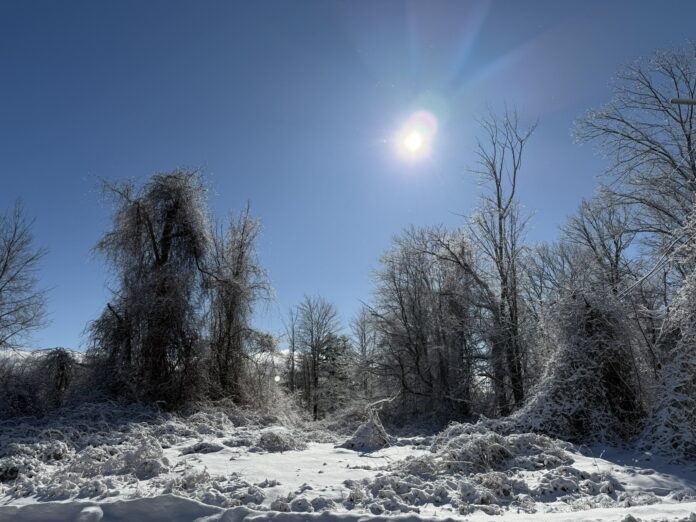BY HARRY WEEKES
Convergence is a wonderful thing. You know, when instead of crossing paths with rabbit tracks, you cross paths with the rabbit? Or when you are headed down Buttercup and the great horned owl lands on the utility wire right as you pass? Or when, at the precise moment you look at a pond, a fish literally leaps completely into the air?
I now have a new favorite. Here is what converged: January’s full moon. Our first really cold days, with morning temperatures in the single digits on both sides of zero. The fact that I got up earlier than normal and decided to head outside.
Walking in any full moon during winter is astonishing. The world is at once colorless and yet not actually black and white. Even if you carried a light, you almost certainly wouldn’t use it.
When I walk, I walk in Mr. Parka—a wonderful, Himalayan-rated ‘ascent jacket.’ As my face is the only thing exposed to the air, I gauge the temperature by how my cheeks feel. About halfway down the driveway, I thought, “Oh, it’s chilly.”
The fairy dust sparkled like mad—fairy dust being what my family calls the hundreds of snow crystals reflecting in the car headlights. As in, “Those sparkles are what fairies collect to make magic.” Even though all the kids are adults now, we still coo at fairy dust.
A part of my morning trek crosses over Indian Creek proper, the vigorous little stream that runs down the canyon. In crossing, I also walk through the willows that border the water. You have probably seen what happens to willows on really cold mornings—they “frost up.” The willows’ red boughs are suddenly covered with ice.
This is something I have wondered: “Do the willows somehow control this?” “Does a layer of frost actually protect and insulate the branches against damage?”
I shuffled along; my gaze roamed like my thoughts, and then, the convergence happened.
I make it to the willows. It is somewhere between 4 and 5 a.m. The moon is full and blazing. It is close to zero degrees.
A thousand fireflies suddenly glow all around me. Or what look to be fireflies. The facets of willow-ice catch the moon, and tiny white lights dance throughout the branches. I stop. The flickering stops, instantly replaced by steady glimmering. I start and the lights flicker again.
My movement brings a thousand reflective surfaces to my eyes, even as it closes a thousand others. Everywhere I look is sparkling and flickering and ablaze, and as amazing as exactly what it is—a vast array of micro-moons glowing in the willows and in the sage.
I dub them MoonFlies, in homage to the insects who ignite the summer skies.
Out I walk. The MoonFlies glow and wink and shimmer. I walk back. The effect is the same. The blinking stops when I do, the pulsing converting instantly to a great assemblage of piercing moonlight.
Ultimately, my walk ends where it begins—standing in the driveway looking back across the hills and valleys. From there, the willows are nothing more than a dark and distant band. Yet, there is something different now. Something I did not know an hour before. That in one of those magical astronomical truisms, periodically, the great light of the sun, coming from millions of miles away, bounces off the moon and ignites the boughs of the willows, where it reflects, in a thousand miniature explosions, off the white frost of January.
In the cold down below, the world is alive. This is how the sun dances with ice.
Harry Weekes is the founder and head of school at The Sage School in Hailey. This is his 53rd year in the Wood River Valley, where he lives with Hilary and two mini-Dachshunds. The baby members of their flock have now become adults—Georgia and Simon are fledging in North Carolina, and Penelope is fledging in Vermont.



